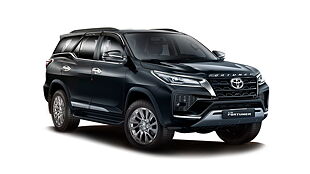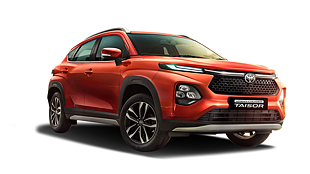Introduction

Indians love travelling together and considering that an average Indian family is larger than anywhere else in the world (except maybe, China), large, seven-seat MPVs are ideal family cars. The recently launched Innova Crysta has been a huge success story for Toyota despite the premium pricing. Its combination of a well-equipped cabin, practical nature and Toyota dependability has been a great hit with buyers. Now though it will get serious competition in form of the much awaited Tata Hexa. Tata has finally launched the Hexa which has been shown numerous times over the past year and on our brief drive in Hyderabad we came away quite impressed. It is powered by a powerful 154bhp motor, definitely looks more interesting and more in your face than the Innova, has a well-built cabin and considering its based on the Aria, we expect the ride to be fantastic too. According to Tata, the Hexa’s main competition is the XUV, but in recent times the demand for the Mahindra has gone down dramatically and the Innova Crysta is the current market flavour. With the Hexa costing a whopping Rs 17.5 lakh (ex-Delhi) for the top 4x4 manual XT model, it is still a massive Rs 2.5 lakh cheaper than the Innova Crysta
So, which of these XXL cars would make for the perfect family vehicle? Read-on to find out.
Massive insides

Climb up into the high-set driver’s seat of the Hexa and you get a commanding view of the front. The fit and finish of the interior is also clearly the best we have seen on a Tata product yet. Plastic quality is much improved, pieces of trim fit together well, the rotary headlight switch feels solid and even the stalks are nice and chunky. In fact when put beside the Toyota, surprisingly it’s the Hexa that exudes more consistent quality levels. Where the Hexa could have been better is in terms of ergonomics. The driving position isn’t ideal as the steering is too close to the driver and the pedals are too high. What makes it worse is the narrow footwell and no place to rest your clutch foot. The touchscreen system and air-con controls are placed a bit too low and you have to take your eyes off the road to operate them. On the subject of the infotainment system, it is a bit lazy to respond and feels a size too small on such a big car. The fact that you have to connect your phone to the system to have navigation is a bit disappointing considering it costs upwards of Rs 20 lakh on-road.

In comparison the Crysta’s dashboard looks properly modern, is well detailed and it’s the swooping dash top that looks great without being overdone. Details like the single piece of metal strip which runs across the top of the dashboard looks premium and classy. Visibility from the high front seats is good and this makes it easy to drive especially in traffic. Despite the swooping dash, ergonomics are spot-on and everything from the touchscreen to the air-con controls are tilted upwards for ease of use. The touchscreen is intuitive to use and displays various information like satellite navigation, eco display (which shows how efficiently you are driving), Bluetooth telephony and music system controls. On the downside we would have preferred the volume control to be a knob for easier access while driving.
Overall quality especially on the upper portion of the dashboard is quite good. But considering it’s an expensive car we expected better consistency especially lower down in the cabin. The sea of black hard plastics around the glovebox, cupholders and doorpads look shiny and the graining could have been better too. Even the air-con buttons are too small and the chrome finish doesn’t look very convincing either.

When it comes to comfort the Hexa does have an upper hand. The spacious front seats are hugely comfortable and visibility is fantastic too. The Innova doesn’t do too badly for front-seat comfort either. In fact, the seat is very spacious and visibility from the slightly higher perch is better still.

Shift your focus to the middle row and the Innova is the more spacious of the two. But despite it getting captain seats for the middle row, the Hexa’s bench offers better underthigh and even the backrest is well shaped and supportive. Although both classify as ‘seven-seaters’, they are best suited for carrying five adults and two kids. The Hexa does have an edge here though, as you sit a bit higher up and is more comfortable over long hauls.

Both cars have large luggage bays with the third row folded. But the Innova Crysta has a flat loading bay and lower loading lip. The Hexa’s third row folds away in the floor but it doesn’t go completely flat and the sloping floor makes loading luggage a chore.

The Tata Hexa, despite being the newer car, is still a little sparse as far as standard equipment is concerned. It does get the basics right, but even then, you get a lot more in the Crysta. Things like powered driver’s seat, satellite navigation and keyless go are missing on the Tata. You get Seven airbags on the Innova as compared to the Six on the Hexa but in the Tata you get stuff like Traction control, ESP and 4x4 with off-road mode which is missing in the Toyota.
Road behavior

These big SUV are meant to be used with all seats occupied and hence with a houseful of passengers it is crucial that the engine needs to have enough pulling power as well as be fuel efficient.
The key change on the Hexa is the adoption of the more powerful 2.2-litre Varicor engine. Start the Tata up and you’ll notice that the engine feels refined – it is much quieter than the Innova’s motor right through the rev range and only gets vocal past 3000rpm. However as experienced in other Tata car’s, this 2.2-litre motor takes time to wake up from low speeds especially in normal engine more and it isn’t as effortless to drive as the Innova. Even the gearbox feels a bit unpolished and transfers a fair amount of engine vibrations to your palm. Thanks to tall gearing and six ratios the Hexa manages to cruise really well and combined with the quiet engine and comfortable ride makes for a car that will feel comfortable even after spending hours behind the wheel. But on two lane roads while overtaking slow traffic you have to constantly shift to keep the car in the meat of the powerband. The more responsive Dynamic mode does help matters but still it never feels as punchy as the larger capacity motor of the Innova. So the fact that it has a notchy gearbox and a heavy clutch marks it down further.

Despite having less power and torque figures, the Innova is the nicer of the two to drive. The fact that it is a massive 400kg lighter than the Tata helps it further. The light clutch and and the engine’s ready responses means it’s quicker to accelerate than the Hexa too, which is useful, especially in traffic. The engine pulls without fuss from as low as 1,300rpm and there’s a strong surge after 1,800rpm. The mid-range punch of the 2.5-litre 150bhp engine is superb and you feel there’s surplus power. Overtaking as a result, is effortless and the Innova can be wafted past slow-moving vehicles quite easily. Unlike the Hexa, the Crysta’s engine doesn’t like to be spun hard though, so it’s best to shift up before 4,000rpm. The Crysta comes with three drive modes too. We preferred the Eco and the Normal mode though, as in Sport the engine responses are too immediate to the point of being called jerky.

The performance numbers reflect what we felt and the Innova Crysta proved to be the quicker car be it in flat-out acceleration or drivability tests. The 0-100kmph sprint in the Hexa took 13.90 seconds as compared to 12.90 seconds taken by the Crysta. In the 20-80kmph in third gear the Crysta was a massive 2.45 seconds quicker than the Hexa.
The Crysta is not only faster but is also the more fuel efficient of the two. It returned a decent 10.1kmpl in the city and 14.5kmpl on the highway. The Hexa owing to its heavier body and 4x4 system didn’t do that badly either. It retuned 9.4kmpl in the city and 13.8kmpl on the highway.
Where the Hexa is clearly better than the Crysta is ride quality. The Tata’s long travel suspension feels absorbent over potholes and large speed breakers alike. The thick tyres and large 18 inch wheels also do their bit to cushion you from surface blemishes. What’s also nice is that the Hexa maintains its poise over big bumps, something that manages to catch the Crysta out. Straight-line stability is also really good and you can cover long distance with ease irrespective of the road surface.

The Innova delivers a somewhat pliant ride too, but it does ‘thunk’ over big bumps and there is a constant pitter-patter over broken roads. The Toyota doesn’t iron out surface imperfections quite as well as the Hexa. However, the Innova does feel more nimble as far as handling is concerned. The stiff suspension setup means it rolls less in corners, the steering is better-weighted and even at low speeds the Crysta feels more manageable. By contrast, the Hexa’s soft suspension makes it roll quite a bit in corners, but it always feels in control and the on demand four wheel drive system help make the handling even more secured in any condition.

The Hexa also comes with 4x4 system and it has a Rough Road mode where power is transmitted to all four wheels, engine power delivery is altered and ESP is less intrusive too. You also get off-road ABS which makes a huge difference especially on slippery surfaces.
Verdict

Rank 2
Tata Hexa 4x4 M/T XT
Final Score: 380/600
Price: Rs 17.49 lakh (Ex-showroom, Delhi)
There’s lots to like about the Tata Hexa. The crossover looks give it a lot of presence and the fact that it is much cheaper than the Innova makes it quite tempting. Seat comfort in all three rows is really good, overall build quality is solid and ride comfort is a notch or two better than the Innova. But apart from this the Toyota trounces the Tata quite convincingly. The engine could have done with more punch at low revs, gearbox is sloppy, ergonomics are not the best, lot of features are missing and small details like the third row not folding flat marks it down further.

Rank 1
Toyota Innova Crysta 2.4 M/T ZX
Final Score: 392/600
Price: Rs 19.89 lakh (Ex-showroom, Delhi)
Which brings us to the Innova Crysta which proved to be a clear winner in this test. While it does have its drawbacks like being much more expensive to buy and having a jiggly overall ride, the Innova Crysta fits its intended purpose brilliantly. Its engine is much punchier than the Hexa, is more versatile, is well put together and is packed with loads of features. The Innova Crysta wins this test purely as a better product. When you add Toyota's reputation of reliability, aftersales service and resale value, this victory becomes all the more convincing.

Pictures by: Ameya Dandekar
Specification
| CAR NAME | Tata Hexa |
Toyota Innova Crysta |
| Variant | 4x4 M/T XT | 2.4 ZX M/T |
| ENGINE | ||
| Fuel | Diesel | Diesel |
| Installation | Front, longitudinal | Front, longitudinal |
| Displacement | 4 cyls, 2179cc | 4 cyls, 2393cc |
| Bore/stroke | 85.0/96.0mm | 92.0/90.0mm |
| Valve gear | 4 valves per cyl DOHC | 4 valves per cyl DOHC |
| Power | 154bhp at 4000rpm | 150bhp at 3400rpm |
| Torque | 400Nm at 1700rpm | 343Nm at 1400rpm |
| Power to weight | 68.14bhp per tonne | 148.89bhp per tonne |
| Torque to weight | 176.99Nm per tonne | 352.11Nm per tonne |
| Gearbox | 6-speed manual | 5-speed manual |
| CHASSIS & BODY | ||
| Kerb weight | 2260kg | 1855kg |
| Tyres | 235/55 R19 | 215/55 R17 |
| Spare | Full size | Full size |
| STEERING | ||
| Type | Rack and pinion | Rack and pinion |
| Type of assist | Hydraulic | Electric |
| Turning circle | 11.2m | 10.8m |
| BRAKES | ||
| Front | Ventilated Discs | Ventilated Discs |
| Rear | Discs | Drums |
| Anti-lock | Yes | Yes |
Test Data
| CAR NAME | Tata Hexa | Toyota Innova Crysta |
| Variant | 4x4 M/T XT | 2.4 M/T ZX |
| PERFORMANCE & BRAKING | ||
| 0-20kmph | 1.25s | 1.01s |
| 0-40kmph | 3.16s | 2.61s |
| 0-60kmph | 4.44s | 5.34s |
| 0-80kmph | 5.72s | 8.40s |
| 0-100kmph | 13.70s | 12.90s |
| 0-120kmph | 20.04s | 18.95s |
| 20-80kmph in 3rd gear | 12.46s | 10.03s |
| 40-100kmph in 4th gear | 12.90s | 11.92s |
| 80-0kmph | 26.01m | 25.45m |
| FUEL ECONOMY | ||
| City | 9.4kmpl | 10.1kmpl |
| Highway | 13.8kmpl | 14.6kmpl |
| Tank size | 60 litres | 55 litres |
| Range | 590km | 600km |
| INTERIOR MEASUREMENTS | ||
| Front | ||
| Knee room(Max/min) | 790/570mm | 820/610mm |
| Headroom(Max) | 1000mm | 1020mm |
| Shoulder room | 1450mm | 1460mm |
| Backrest height | 650mm | 630mm |
| Rear | ||
| Headroom | 990mm | 920mm |
| 1m kneeroom | 790mm | 830mm |
| Shoulder room | 1460mm | 1460mm |
| Knee room(Max/min) | 960/740mm | 1010/760mm |
| Seat length | 520mm | 490mm |
| Backrest height | 600mm | 590mm |
| Boot | 544litres(calculated) | 983litres(calculated) |
| Depth/width/height | 1040/1190/440mm | 1210/1270/640mm |
| Loading lip height | 800mm | 710mm |
Score Sheet
| Parameters | Max points | Tata Hexa 4x4 XT M/T |
Toyota Innova Crysta 2.4 ZX M/T |
| DRIVING FEEL | |||
| Steering response | 20 | 9 | 10 |
| Directional stability | 25 | 15 | 14 |
| Engine characteristics | 25 | 16 | 19 |
| Gearbox | 20 | 12 | 14 |
| Visibility | 10 | 7 | 7 |
| Intermediate results | 100 | 59 | 64 |
| SPACE | |||
| Front Space | 25 | 18 | 20 |
| Rear space | 25 | 19 | 18 |
| Feeling of space | 20 | 16 | 16 |
| Boot space/flexibility | 20 | 18 | 20 |
| Payload | 10 | 7 | 7 |
| Intermediate results | 100 | 78 | 81 |
| IN THE CABIN | |||
| Comfort equipment | 25 | 12 | 16 |
| Operatibility | 15 | 10 | 11 |
| Feel of quality | 20 | 13 | 13 |
| Front seats/ingress | 20 | 18 | 16 |
| Rear seat/ingress | 20 | 17 | 15 |
| Intermediate results | 100 | 70 | 71 |
| PERFORMANCE | |||
| Acceleration | 25 | 15 | 15 |
| Top speed | 10 | 7 | 8 |
| Driveability | 30 | 24 | 28 |
| Braking | 25 | 20 | 21 |
| Environment | 10 | 5 | 5 |
| Intermediate results | 100 | 71 | 77 |
| ROAD MANNERS | |||
| Ride quality | 30 | 23 | 20 |
| Turning circle | 15 | 12 | 12 |
| Handling | 20 | 9 | 10 |
| Manoeuvrability | 15 | 8 | 8 |
| Safety | 20 | 11 | 9 |
| Intermediate results | 100 | 63 | 59 |
| PRICE | |||
| Price | 45 | 9 | 8 |
| Resale | 10 | 6 | 8 |
| Warranty | 10 | 8 | 7 |
| Fuel efficiency | 35 | 16 | 17 |
| Intermediate results | 100 | 40 | 40 |
| Total | 600 | 380 | 392 |

![Toyota Innova Crysta [2016-2020] Image Toyota Innova Crysta [2016-2020] Image](https://imgd.aeplcdn.com/272x153/n/cw/ec/20623/innova-crysta-exterior-right-front-three-quarter.jpeg?q=80)

























